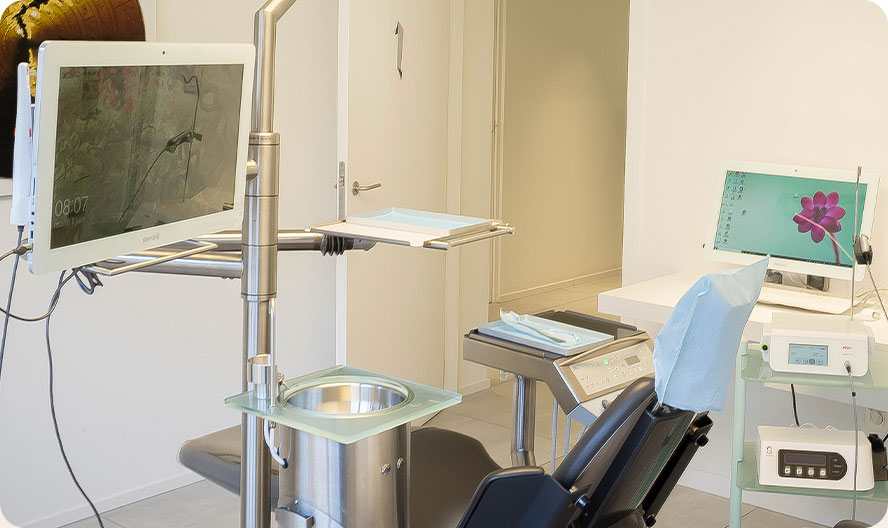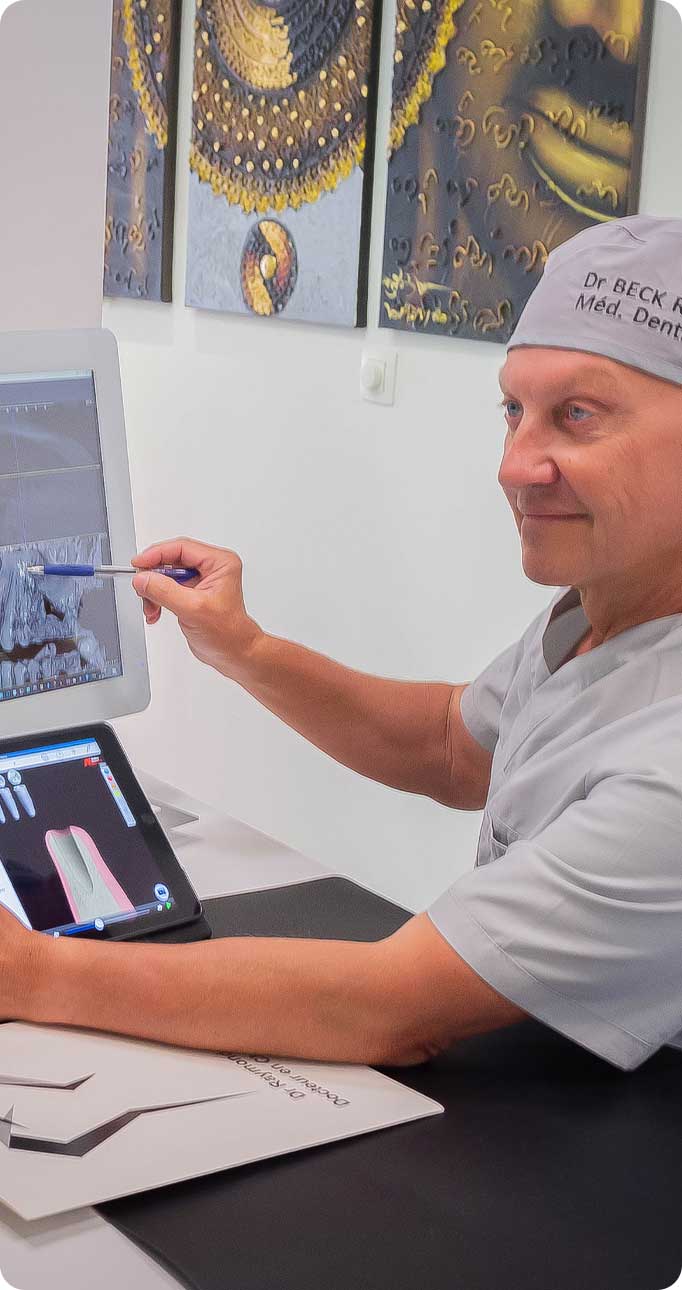Endodontic
Endodontics is the practice of dentistry that encompasses the treatment of all inflammations and infections that affect the dental pulp and the internal canals of the teeth. This includes the tooth root, the inner part of the tooth and the periradicular tissues.
Endodontic treatment, better known as root canal therapy, is the removal of infected tooth pulp after bacteria have entered it.
The aim of this treatment is to restore the tooth to satisfactory function, while avoiding the need to extract it. There are several reasons why your dentist may need to perform a root canal, which we will discuss later in this section.
Endodontic treatments aim to save a tooth from extraction, while protecting the patient from the spread of infection, as is the case when a dental abscess forms.
Dental abscesses bring with them unpleasant symptoms, such as pain, swelling of the face and pus in the mouth. In addition, dental abscesses can lead to serious complications and can jeopardise the patient’s health. It is therefore important to treat them as soon as possible.
Endodontic treatment is a complex operation that requires real expertise. It consists of:
- remove infected living tissue from the dental pulp
- prepare the inside of the channels
- disinfecting the inside of the canals
- drying the root canal system
- do the root canal filling
A local anaesthetic is performed before any endodontic treatment.


